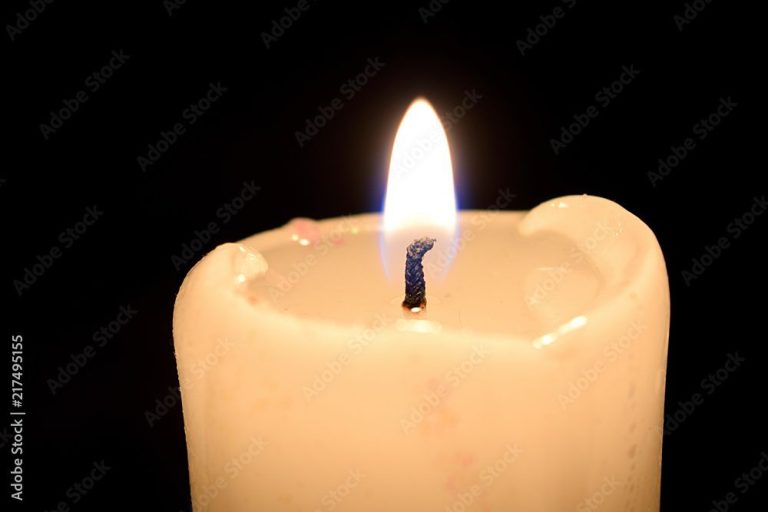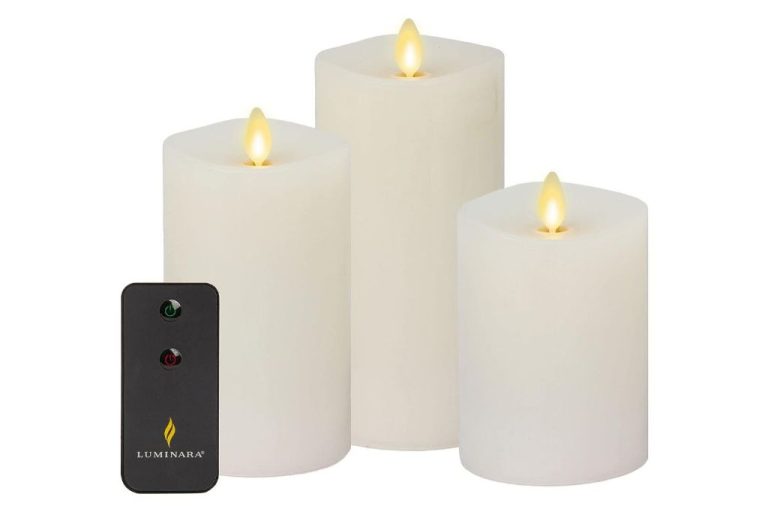How Long Do Batteries Last In Battery Operated Candles?
Battery-operated candles have become increasingly popular over the past decade as an alternative to traditional wax candles. Unlike real candles, battery-operated candles provide the ambiance of a flame without the fire risk, dripping wax, smoke, or hassle of lighting wicks. You simply turn them on like a lightbulb to enjoy the candlelit glow.

The convenience and safety of battery-operated candles makes them an attractive option for many households and situations. However, there is one aspect that gives some consumers pause: how long will the batteries actually last before needing to be replaced? Battery life can vary substantially depending on the type of batteries used and how often the candle is operated.
In this article, we will explore the factors that impact battery lifespan in battery-operated candles and provide tips to help maximize battery life. Knowing what to expect and how to optimize battery life can give you confidence in using these electric candles for years of enjoyment.
Types of Batteries Used
Battery-operated candles rely on disposable or rechargeable batteries as their power source. The most common battery sizes used are AA, AAA, C, and D. Smaller candle designs often use AA or AAA batteries, while larger pillar-style candles may use C or D batteries.
Alkaline batteries are the most commonly used battery type. They provide steady power at an affordable price point. Lithium batteries are more expensive but provide longer lasting power and better performance in cold weather. Rechargeable battery options include nickel metal hydride (NiMH) and lithium-ion (Li-ion) batteries. These can be reused over and over again by recharging them with a battery charger.
When shopping for battery-operated candles, pay attention to the required battery type and quantity to ensure optimal performance. Opting for long-lasting lithium or rechargeable batteries can minimize the cost and waste produced over time.
Battery Life Expectancy
Battery life can vary substantially depending on the type of battery used and how the candle is utilized. Here are some key factors that affect battery lifespan in battery-operated candles:
Alkaline batteries tend to provide 30-100 hours of continuous burn time. Lithium batteries last approximately 100-150 hours. Using name brand alkaline batteries versus generic or rechargeable batteries can extend life by 50% or more.
Intermittent usage where the candle is turned on only during certain hours of the day will extend battery life versus leaving it on continuously. For example, using an alkaline battery 6 hours per day may last for up to 2 months, whereas continuous usage may only last for 1-2 weeks.
Colder temperatures can reduce battery performance. Battery life will be longer if used consistently above 50°F/10°C. Below freezing conditions can cut battery life to just 25-50% of rated capacity.
Candle Design Factors
The design of battery-operated candles can significantly impact battery life. Some key factors related to candle design include:
Light Bulb Types and Wattages
The type of light bulb used in battery candles and their wattage affects battery drain. LED bulbs are the most energy efficient and will last the longest. Incandescent bulbs are not as efficient and will reduce battery life. Candles with multiple bulbs should opt for lower wattage LEDs.
Auto On/Off vs. Continuous
Candles with an auto on/off function that turns the candle on at dusk and off at dawn will preserve battery life compared to leaving the candle on continuously. This allows the batteries to recharge during daylight hours.
Number of Bulbs
More bulbs in a candle require more battery power to illuminate. Opting for candles with fewer bulbs, or the ability to selectively turn bulbs on and off, can extend battery life. The best scenario is a single LED bulb operated on auto on/off mode.
Operating Environment
The environment your battery operated candles are used in can impact the battery life. Extreme temperatures, whether hot or cold, can reduce battery performance and longevity. Lithium batteries in particular don’t function as well in cold environments. The chemical reactions that power the battery slow down in cold temperatures, reducing the battery output. On the other hand, high heat can accelerate chemical reactions inside the battery which can lead to faster depletion. Humidity is another environmental factor to consider. If the battery connections get damp or corroded from moisture in a humid environment, this can disrupt the electrical contacts and cause intermittent operation or failure.
Usage Habits
How often and for how long you use your battery operated candles can significantly impact battery life. Continuous usage will drain batteries faster than intermittent use. Here’s a closer look:
Continuous vs Intermittent Use
Leaving battery operated candles on 24/7 will drain the batteries much faster than only turning them on at night or for several hours per day. Continuous, uninterrupted operation gives the batteries no opportunity to rest and recover. The constant drain will exhaust the batteries sooner.
Leaving on 24/7 vs Only at Night
Using battery operated candles as night lights that stay on all night long will require more frequent battery changes than only turning them on for a few hours in the evening. Running them 24/7 subjects the batteries to continuous drain without any recovery period to replenish the lost power. Limiting the daily usage provides extra battery life.
Cost Savings
Battery-operated candles can provide significant cost savings compared to traditional wax candles. Here are some tips to maximize the savings:
Buy batteries in bulk packs instead of single packs – Buying a multipack of batteries on sale will cost less per battery compared to single packs. Stock up when you find bulk battery packs at a discounted price.
Invest in rechargeable batteries – Though more expensive upfront, rechargeable batteries pay for themselves over time. You’ll avoid constantly buying new disposable batteries. Opt for rechargeable nickel-metal hydride (NiMH) batteries over lithium-ion for the best value and performance.
Take advantage of coupons and loyalty programs – Check for coupons and promos both in-store and online to lower the cost of batteries. Sign up for loyalty programs with major retailers to earn future discounts.
Buy store brand batteries – Generic batteries work just as well as brand name for battery candles, at a fraction of the price. Store brand alkaline batteries can cost 50% less than premium brands.
Consider solar-powered candles – Though higher in initial investment, solar-powered candles don’t require any battery purchases over time. The sun’s energy charges their built-in battery during the day. They’re a smart eco-friendly choice.
Maximizing Battery Life
There are several tips for maximizing the battery life in battery operated candles:
Use Lithium Batteries
Lithium batteries last significantly longer than alkaline batteries. Opt for lithium batteries, especially lithium AA and AAA batteries, for the longest battery life.
Lower Wattage Bulbs
LED bulbs require less power than incandescent bulbs. Choose battery operated candles with lower wattage LED bulbs to extend battery life.
Intermittent Use
Only turn on battery operated candles when needed. Using them intermittently rather than leaving them on continuously will help conserve battery life.
Proper Storage
When not in use, make sure to remove the batteries from battery operated candles. Storing candles with batteries still in them can drain the batteries over time.
Replacing Batteries
Replace batteries in battery operated candles when the light starts dimming or flickering, which are signs the batteries are running low and need to be changed.
Keep Batteries Separate
Store unused batteries separately from battery operated candles to prevent draining of batteries over time due to small current draws.
Recycling Batteries
Proper recycling of batteries is extremely important for reducing environmental impact and protecting human health. Batteries contain heavy metals and corrosive materials that can contaminate soil and groundwater if disposed of improperly. Recycling allows these hazardous materials to be recovered and reused.
Many retailers that sell batteries also offer free recycling programs. Major chains like Best Buy, Home Depot, Lowes, and Staples all accept used batteries for recycling. You can also find municipal household hazardous waste collection facilities that take batteries in many communities. Make sure to tape the terminals before transportation to prevent fires.
By taking the simple step of recycling batteries instead of throwing them in the trash, we can keep these toxic materials out of landfills and our waterways. Recycling batteries is easy and important – check for local options in your community today.
Conclusion
Battery life in battery operated candles depends on several key factors. The type of batteries used, whether alkaline or lithium, impacts longevity. Alkaline batteries generally last between 20-40 hours of use while lithium batteries provide 80-120 hours. Candle design also plays a role, with enclosed flameless candles preserving batteries longer than open votives. Operating environment matters too – cold weather can decrease battery performance. And of course, battery life shortens with frequent use. With careful use and the right batteries, battery operated candles can provide weeks or months of enjoyable ambiance before a battery change is needed.
While they require some maintenance, battery candles deliver the soft glow of real candles without the hassle of managing lit flames. Convenient and safe for everyday use, battery operated candles lend atmosphere to any space. Understanding how to maximize their battery life allows users to enjoy these candles to the fullest.





